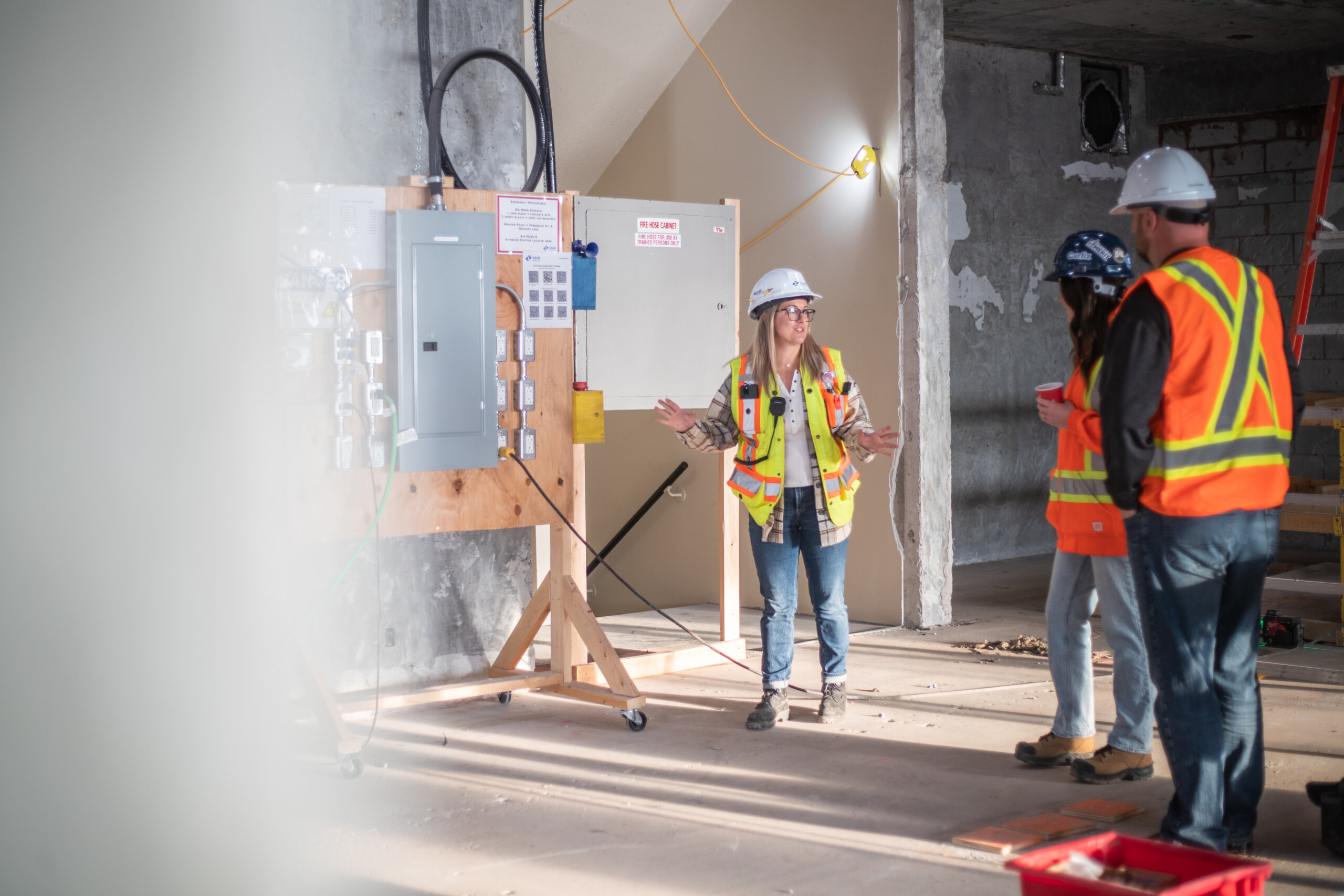Keeping a clean jobsite isn’t just about appearances—it’s about safety, productivity, and professionalism. From slips and trips to fire hazards and blocked exits, poor housekeeping is one of the most common (and most preventable) causes of workplace injuries.
Why Good Housekeeping Matters
Poor housekeeping plays a role in the majority of construction site accidents:
- Slips, trips, and falls are responsible for almost 40% of construction workplace deaths.
- Approximately two-thirds of all workplace accidents can be traced back to poor housekeeping practices.
- According to the US Department of Labor, 15% of all accidental worker deaths are attributable to slips, trips, or falls, many of which are linked to poor workplace housekeeping.
- A report by the Hong Kong Labour Department states that more than 70% of construction site accidents are related to poor housekeeping.
- A clean and organized jobsite reduces time spent searching for tools and improves workflow efficiency.
These stats make one thing clear: good housekeeping isn’t optional; it’s essential—not just for compliance, but for protecting your crew, timelines, and bottom line.
Housekeeping in the Workplace
Housekeeping on a construction site isn’t the same as cleaning your kitchen. It includes maintaining clear access to exits and fire extinguishers, keeping work surfaces clear of obstructions, storing tools properly, and ensuring materials and debris are removed promptly.
Poor housekeeping creates:
- Tripping hazards from tools, cords, or scrap materials
- Fire hazards from flammable materials left unattended
- Falling object risks from improperly stacked or unsecured items
- Limited access to emergency exits or firefighting equipment
🔥 Fire prevention tip: Always store flammable materials in designated areas and dispose of combustible waste properly. Blocked fire exits or fire extinguishers are a major violation and hazard.
Elements of Good Housekeeping
Effective housekeeping is a daily, crew-wide responsibility. It should be integrated into every task—not treated as a separate job at the end of the day.
Key practices include:
- Clean as you go – Don’t wait until the end of the shift to tidy up.
- Clear walkways and access routes – Materials, cords, and tools should never block paths.
- Proper storage of tools and equipment – Use racks, bins, or designated areas.
- Safe material stacking – Keep loads stable and below shoulder height.
- Prompt disposal of waste and scrap – Especially sharp, flammable, or trip-prone debris.
- Regular site inspections – Supervisors and workers should spot hazards early.
📣 Take ownership: Every crew member plays a role in jobsite cleanliness. Clean up after yourself. Report issues. Pitch in. Housekeeping isn’t just a foreman’s job.
Biggest Safety Issues in Housekeeping
The most common (and costly) hazard? Slips, trips, and falls.
Improper storage of tools, loose cords, wet surfaces, and random debris lead directly to these incidents—and they can result in fractures, head injuries, or worse. Other major risks include:
- Fire and chemical exposure from unmanaged flammable materials
- Injury from falling objects due to cluttered overhead storage
- Blocked emergency routes during critical moments
🚧 Productivity impact: A disorganized site slows everything down. Workers waste time looking for tools or navigating clutter—and morale drops when the space feels chaotic or unsafe.
Housekeeping in Construction: Key Focus Areas
Construction sites are dynamic and messy by nature—but that makes housekeeping even more important.
Focus on these areas daily:
- Stairwells and scaffolding platforms
- Entry and exit points
- Areas with ongoing hot work or flammable materials
- Walkways and paths with high foot traffic
- Elevated storage or staging areas
- Wet or muddy work zones
What OSHA Says
Housekeeping is more than a best practice, it’s a legal requirement. OSHA mandates that employers maintain clean and orderly workplaces.
- 29 CFR 1910.22: “All places of employment, passageways, storerooms, service rooms, and walking-working surfaces are kept in a clean, orderly, and sanitary condition.” and “The floor of every workroom shall be maintained, so far as practicable, in a dry condition.“
- 29 CFR 1910.176: “Storage areas shall be kept free from accumulation of materials that constitute hazards from tripping, fire, explosion, or pest harborage.”
For construction, the key standards include:
- 29 CFR 1926.25: “During the course of construction, alteration, or repairs, form and scrap lumber with protruding nails, and all other debris, shall be kept cleared from work areas, passageways, and stairs, in and around buildings or other structures.”
- 29 CFR 1926.252: “All scrap lumber, waste material, and rubbish shall be removed from the immediate work area as the work progresses.“
OSHA can and does issue citations for poor housekeeping—especially if it contributes to an injury.
A Foundational Necessity
Good housekeeping isn’t glamorous, but it’s foundational to a safe and productive site. A few extra minutes spent putting things away or sweeping up debris can prevent hours in the ER—or worse. Make it a habit, not an afterthought.
✅ Clean as you go
✅ Keep walkways clear
✅ Store tools and materials safely
✅ Dispose of debris regularly
✅ Inspect the site daily
A tidy site is a safer site. Make housekeeping part of the job—not something you leave for the end.
